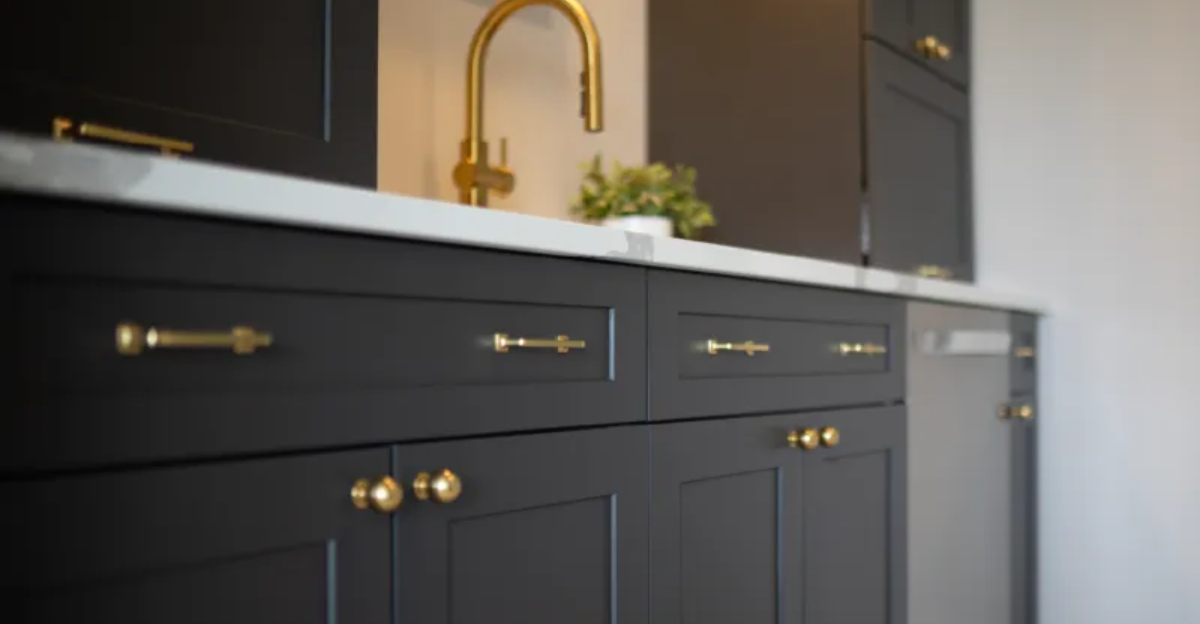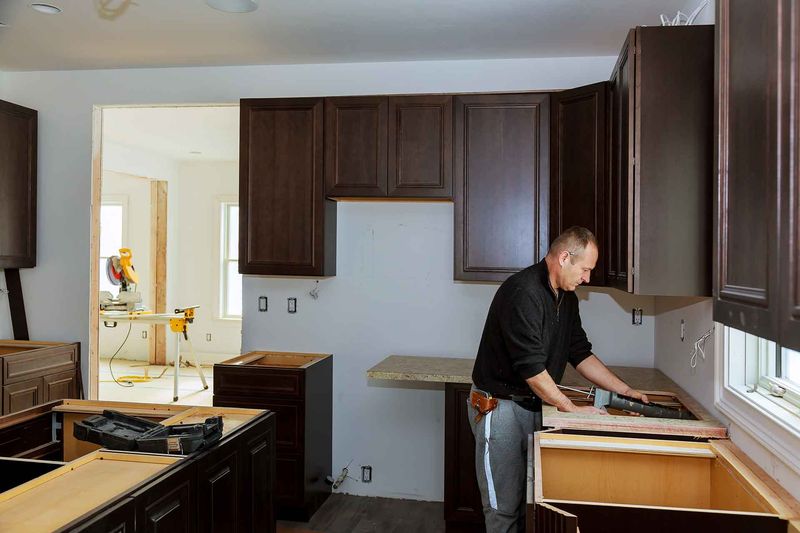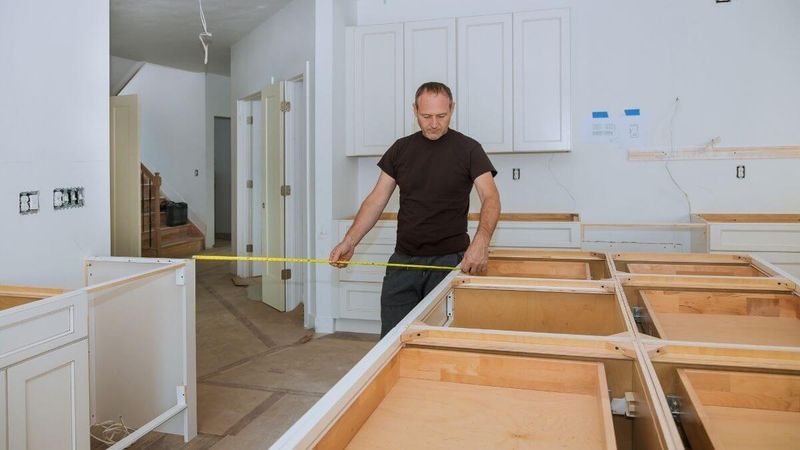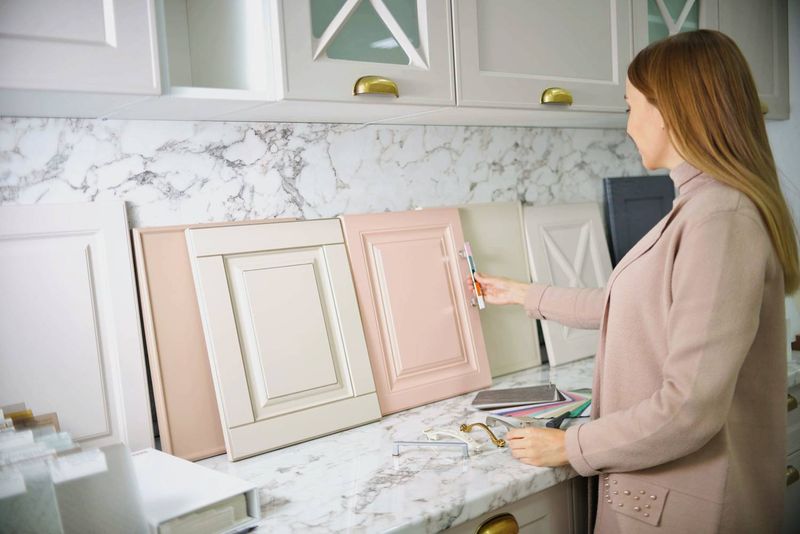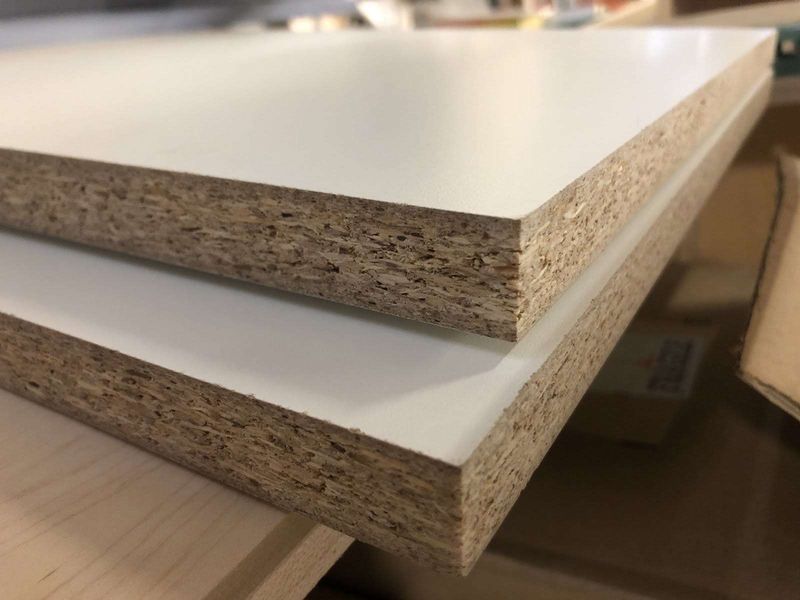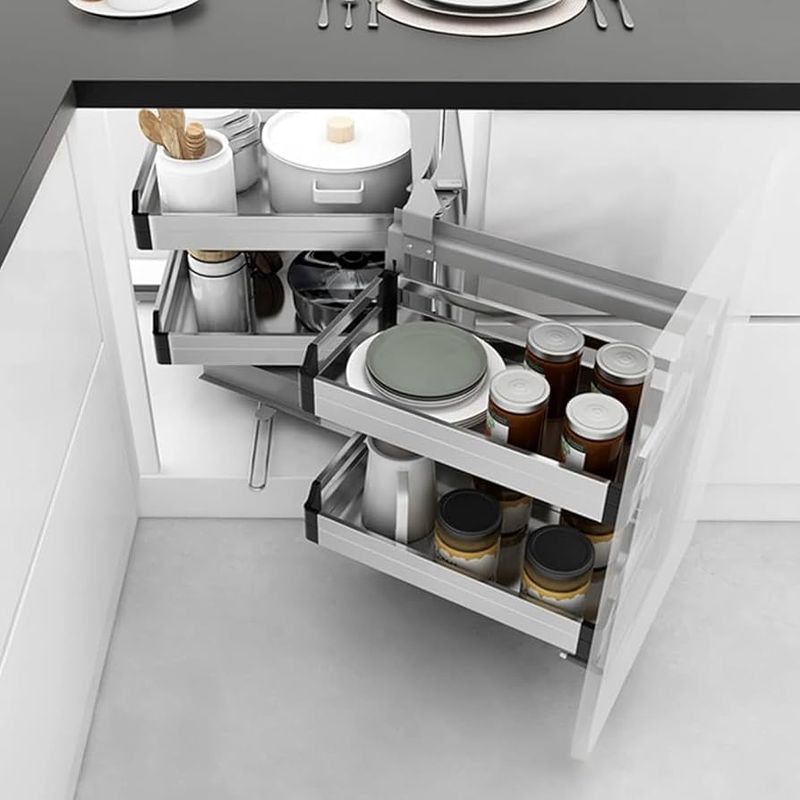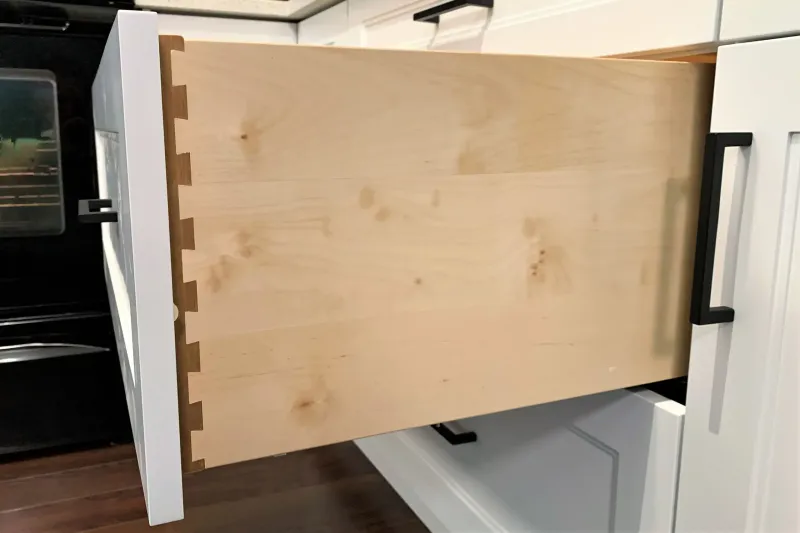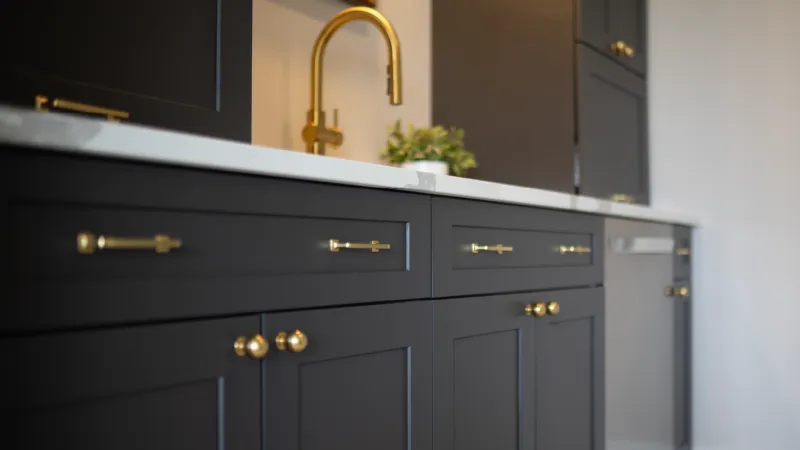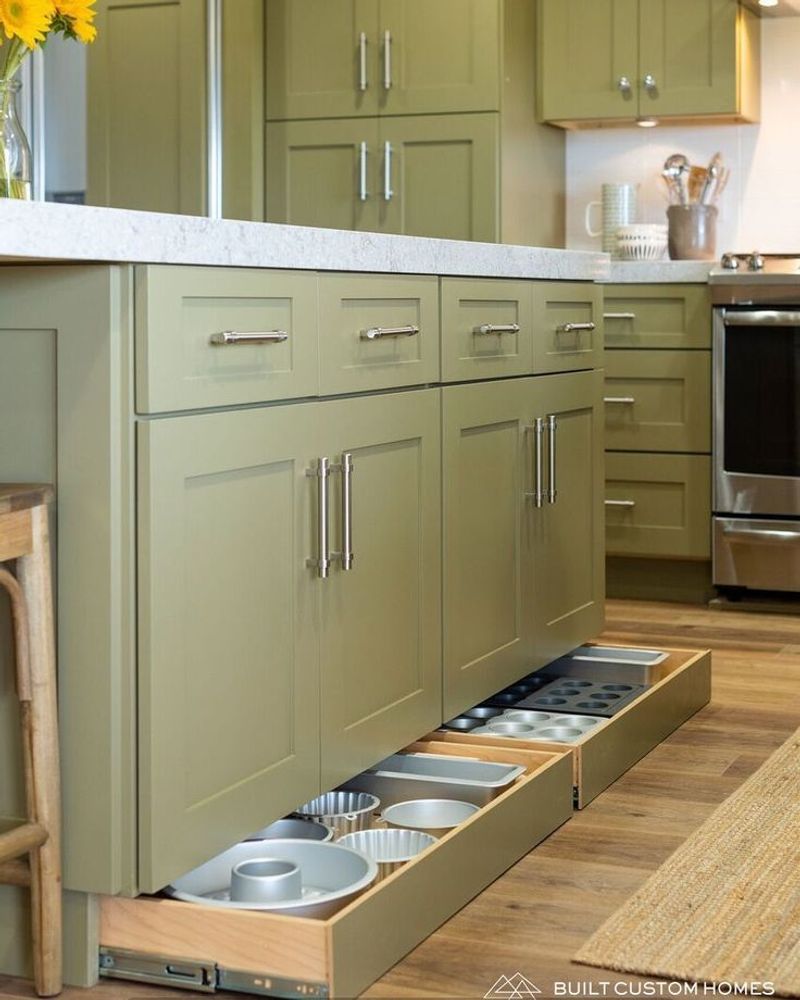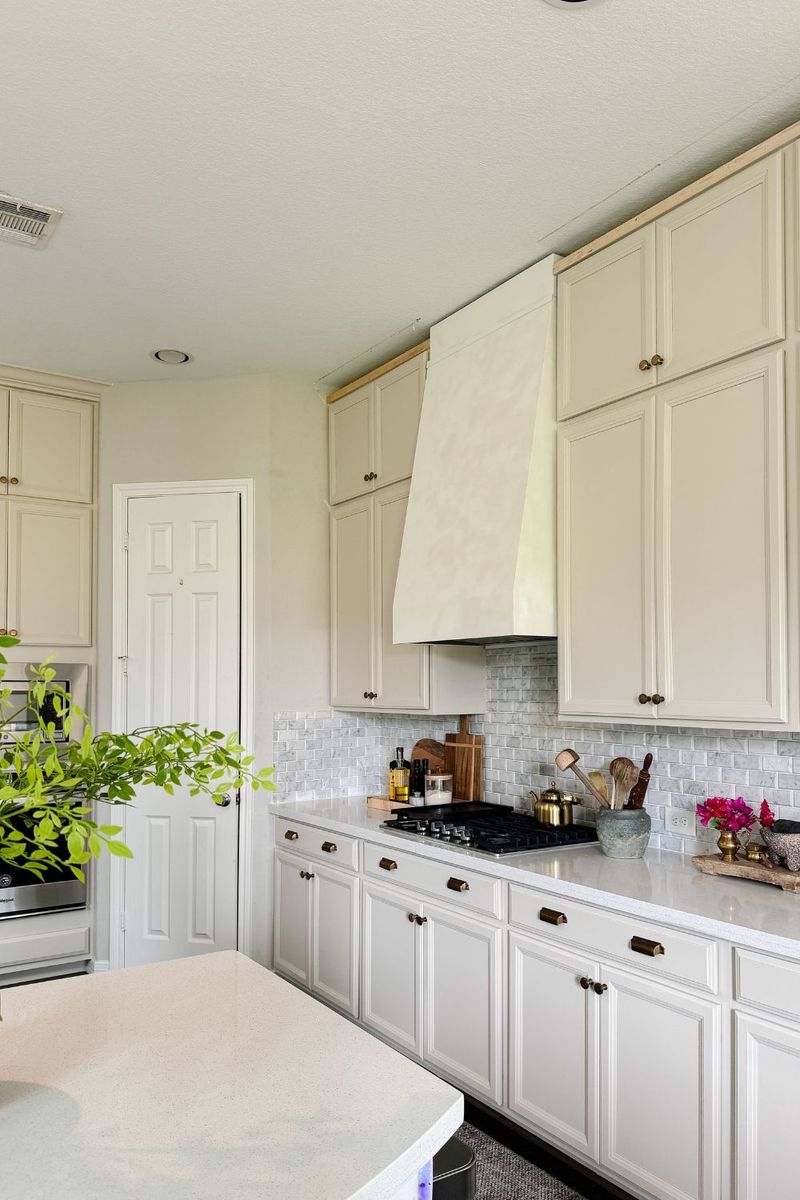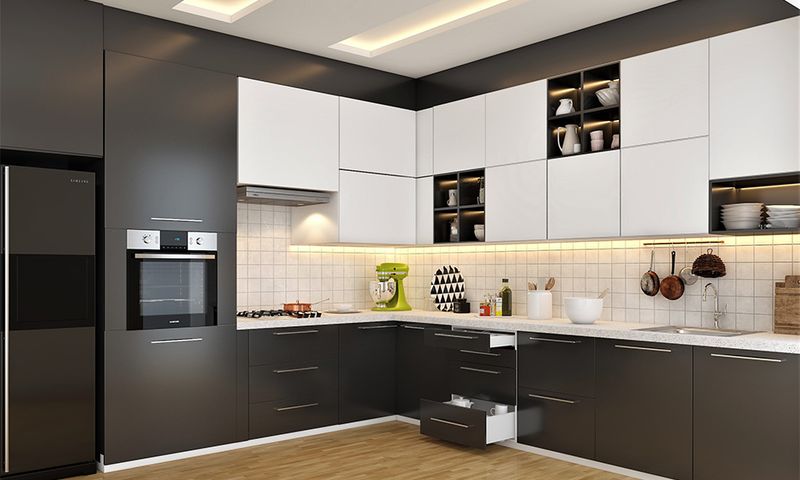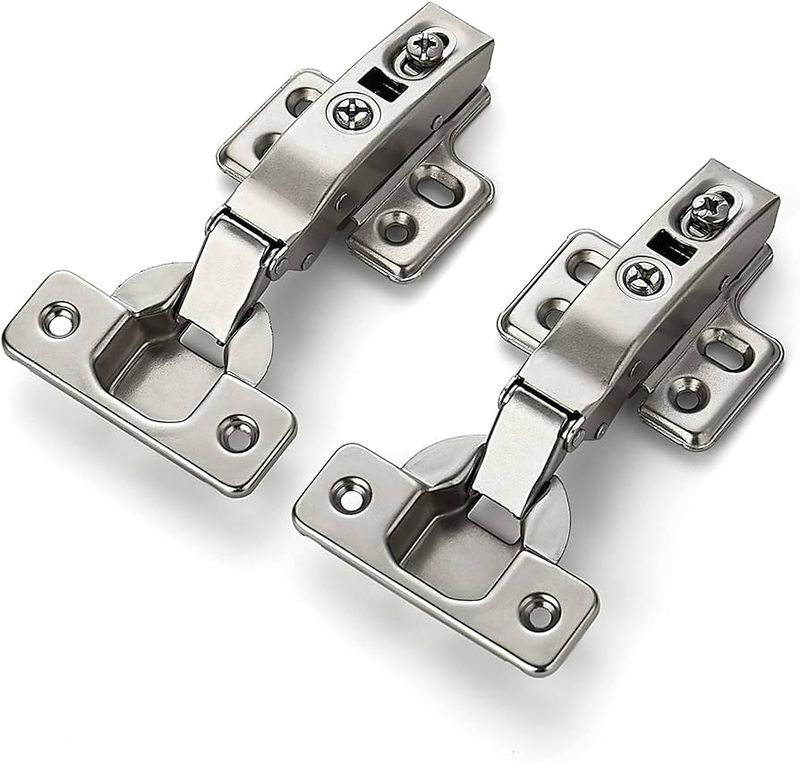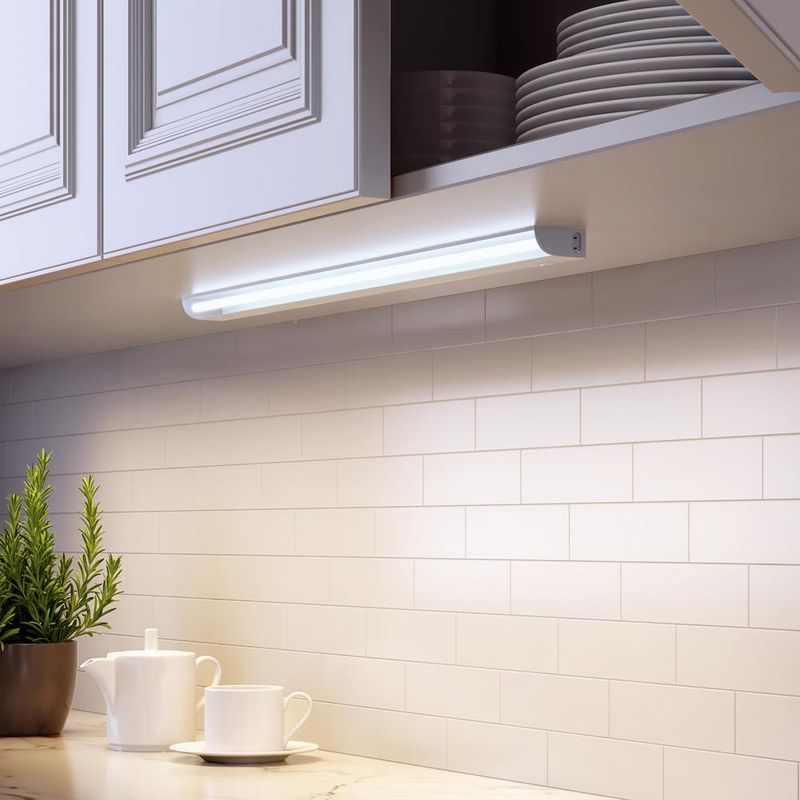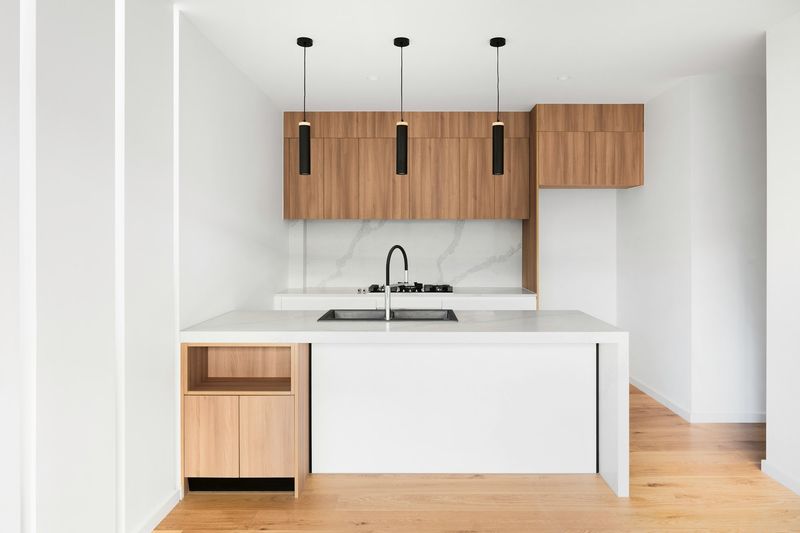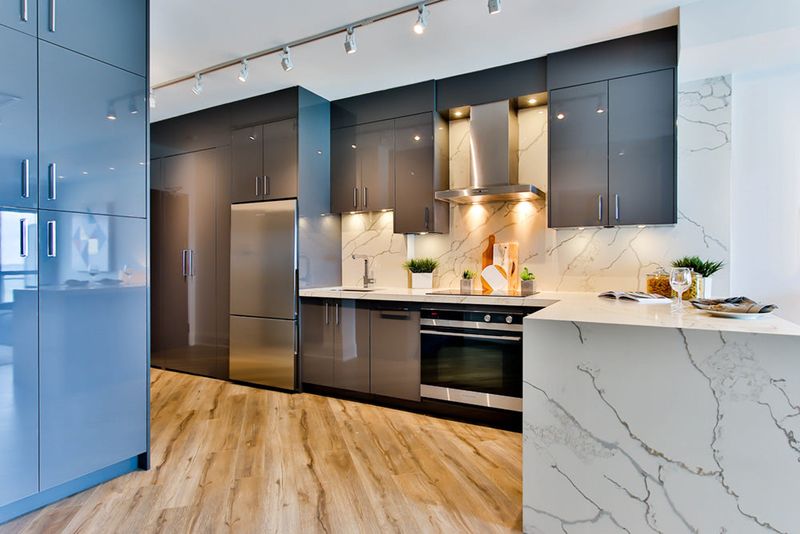Renovating your kitchen can be exciting yet overwhelming, especially when it comes to choosing cabinets.
These storage workhorses define both the look and function of your cooking space.
Top designers have shared their insider knowledge to help you navigate this important decision, saving you from costly mistakes and design regrets down the road.
1. Budget Beyond The Base Price
When calculating costs, many homeowners focus solely on the cabinet price tag. Behind those dollar signs lurk additional expenses for hardware, installation, and special features.
Professional installers typically charge between $100-$300 per cabinet, which adds up quickly in larger kitchens. Don’t forget to factor in fancy pulls, soft-close mechanisms, and interior organizers that can increase your total investment by 15-30%.
2. Measure Twice, Order Once
You’d be surprised how many kitchen renovations go sideways because of incorrect measurements. Even being off by half an inch can create cascading problems throughout your entire layout.
Smart homeowners take measurements at three different times of day (materials expand and contract) and have a second person verify them. Some cabinet dealers offer measuring services, which might cost extra but provides insurance against expensive ordering mistakes.
3. Door Style Affects More Than Looks
Those gorgeous raised panel doors might catch your eye, but they require significantly more cleaning time than simpler slab designs. Intricate details collect grease and dust in hard-to-reach crevices.
Shaker styles offer a happy medium between visual interest and practicality. For busy families, consider how much maintenance you’re willing to commit to before falling in love with elaborate door designs that will demand regular detailed cleaning.
4. The Hidden Truth About Particleboard
Contrary to popular belief, particleboard cabinets aren’t always inferior to solid wood options. Modern engineered materials have come a long way in durability and performance.
High-density particleboard with quality laminate or veneer finishes can actually resist warping better than solid wood in humid environments like kitchens. The real quality indicator isn’t always the core material but the construction methods and hardware quality used throughout the cabinet.
5. Beware The Corner Cabinet Trap
Corner cabinets can become the black holes of kitchen storage without proper planning. Standard designs waste up to 40% of potential storage space!
Lazy Susans aren’t your only option anymore. Consider blind corner systems with pull-out mechanisms or magic corners that bring contents fully into view. While these solutions cost more upfront, they eliminate the frustration of crawling halfway into your cabinet to retrieve that rarely-used appliance.
6. The Drawer Box Secret
Peek inside the drawers before committing! Flimsy drawer boxes will start sagging under the weight of your silverware within months, no matter how beautiful the cabinet fronts look.
Quality drawer boxes feature dovetail joints rather than stapled corners, and solid wood sides at least ½-inch thick. The drawer glides matter too – look for undermount slides rated for at least 75 pounds that extend fully, giving you access to everything inside.
7. Soft-Close Isn’t Just Luxury
Ever been startled by the bang of cabinet doors while someone rummages for a midnight snack? Soft-close mechanisms aren’t merely a fancy upgrade – they’re relationship savers!
Beyond noise reduction, these clever hinges prevent the damage caused by slamming, extending cabinet life by years. Many mid-range manufacturers now include them standard, but budget lines still treat them as premium add-ons. This feature typically adds just $10-30 per door but delivers value far beyond its cost.
8. The Filler Strip Strategy
Those narrow strips of wood between cabinets aren’t just decorative—they’re functional problem-solvers that prevent drawer collisions with nearby handles and allow doors to open fully against walls or in corners.
Savvy designers are now transforming these “wasted spaces” into vertical spice racks, broom closets, or pull-out pantries. Even a 3-inch gap can become useful storage with the right custom insert, turning what was once dead space into prime kitchen real estate.
9. Hardware Can Make Or Break Your Design
Think of cabinet hardware as the jewelry of your kitchen—it can elevate basic cabinets or completely undermine expensive ones. Skimping here is like wearing flip-flops with a designer suit!
Quality pulls and knobs typically start around $5-15 each, with high-end options reaching $50+. For a standard kitchen with 30 doors and drawers, budgeting $300-900 for hardware is reasonable. Consider oversized pulls for a contemporary statement or vintage glass knobs for character.
10. The Toe Kick Revolution
That recessed space at the bottom of your cabinets isn’t just for toe comfort. Forward-thinking designers are transforming this overlooked area into functional storage drawers perfect for baking sheets, table linens, or rarely-used items.
Another brilliant option? Toe kick vacuum systems that allow you to sweep crumbs directly into a central vacuum. Some homeowners are even installing subtle lighting in this zone, creating a floating effect while providing nighttime pathway illumination.
11. Factory Finish Versus Site Finish
The environment where your cabinets receive their final coat makes a world of difference in durability. Factory-finished cabinets cure in controlled dust-free environments with professional spray equipment and industrial drying chambers.
On-site finishing, while offering ultimate color customization, often can’t match this level of perfection and hardness. If choosing site-finished cabinets, verify your contractor uses HVLP spray equipment rather than brushes, which can leave visible stroke marks that collect dirt over time.
12. The Depth Deception
Standard 24-inch deep upper cabinets might seem practical, but they often create shadowy countertop spaces where items get lost. Many designers now recommend 15-18 inch depths for uppers to improve visibility and access.
For lower cabinets, consider going deeper than the standard 24 inches in some areas. A 27-30 inch deep cabinet by your range provides extra countertop space for hot pots and cooking preparations. These small adjustments dramatically improve kitchen functionality without changing the footprint.
13. Hinges Matter More Than You Think
Most shoppers focus on door styles while completely overlooking the humble hinge—the component that will move thousands of times throughout your cabinet’s life. Bargain cabinets often hide cheap hinges that will loosen or fail within years.
European-style concealed hinges with six-way adjustment allow for perfect door alignment even as your home settles over time. Look for hinges with lifetime warranties and at least three mounting screws per plate for maximum stability and longevity.
14. The Lighting You’re Forgetting
Working in your own shadow makes kitchen tasks frustrating and potentially dangerous. Under-cabinet lighting isn’t just decorative—it’s essential task lighting that transforms how you use your space.
LED strips or pucks should be planned during the cabinet installation, not as an afterthought. Position them toward the front of the cabinet, not against the wall, to prevent harsh reflections. Some high-end cabinets now include interior lighting that activates when doors open—particularly useful for deep corner cabinets.
15. The Vertical Space Revolution
Most kitchens waste the valuable space between countertops and upper cabinets. Smart designers are now incorporating slim pull-down spice racks, knife blocks, or tablet holders in this zone.
Another option is extending cabinets to the ceiling, eliminating that dust-collecting gap above. If ceiling-height cabinets aren’t possible, consider glass-front display cabinets for the uppermost section to showcase decorative items while maintaining an open feel. Remember to keep a sturdy step stool nearby!
16. The Finish That Fights Fingerprints
Glossy cabinet finishes might look spectacular in showrooms, but they quickly become fingerprint museums in busy households. Matte and satin finishes hide smudges much better while still offering excellent durability.
For darker cabinet colors, consider textured laminates or thermofoil finishes that disguise fingerprints through surface variation.

